Yamaha Seca Turbo
Article by Mark Trotta
There may be better or worse choices for a commuter bike, but in 1983, my choice was a Yamaha Seca Turbo XJ650. As you can see from the picture below, it got me through all kinds of weather.
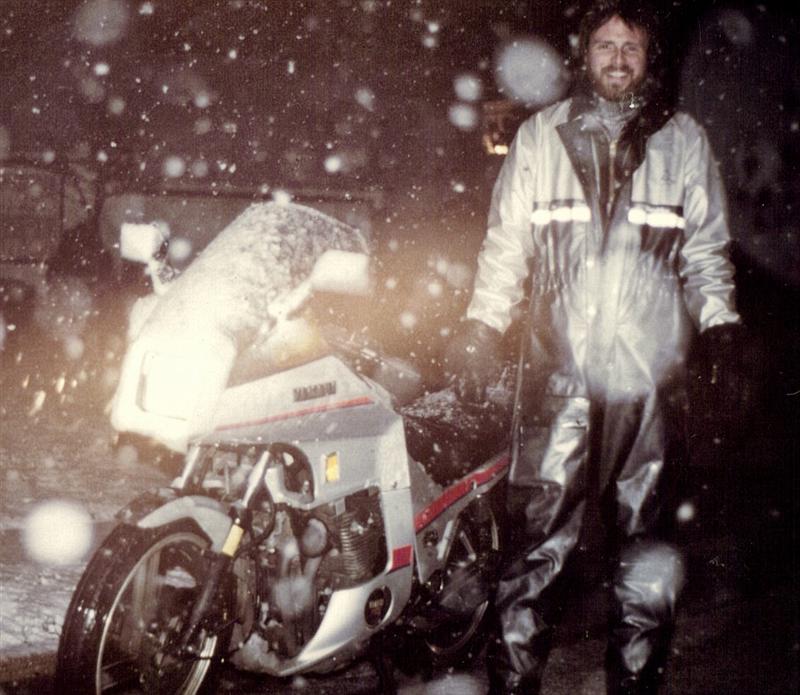
Turbo Bike History
Offering the allure of 1000cc performance in a mid-size package, Yamaha was the second of the Japanese manufacturers to offer a turbocharged motorcycle. Honda had been first with its liquid-cooled CX500 Turbo.
After the Seca Turbo hit the market in 1982, Suzuki came out with the turbocharged XN85D the following year. The Kawasaki GPz-750 Turbo arrived in 1984.
_________________________________________________
_________________________________________________
Yamaha XJ650
Introduced in 1980, the Yamaha XJ650 series was offered in two versions. First was the Maxim, a cruiser-style bike with high bars and stepped seat. A second model, the Seca, was a sport bike, and available only in the European market for the first year.
XJ650 Seca Turbo
Sharing frames with the Yamaha Seca, the XJ650 Turbo front suspension was upgraded to air adjustable forks, with dual-disc front and a drum rear brake. Weight was 565 lbs, about 50 pounds more than the non-turbo model. Seat height was 31 inches.
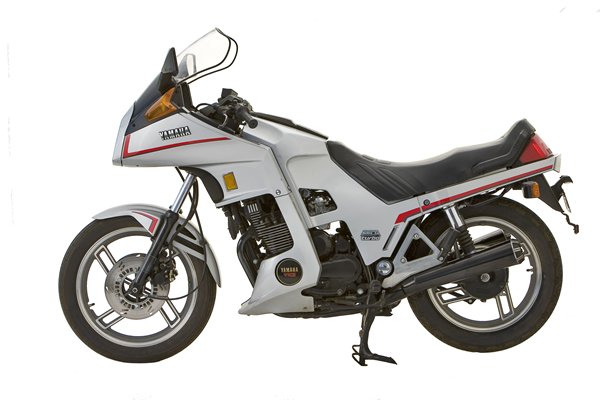
The engine is an air and oil cooled DOHC inline-four, and based on the standard Seca 650cc motor. All XJ650 engines featured a pair of chain-driven overhead camshafts and a one-piece crankshaft.
To minimize engine width, the alternator and starter were placed behind the cylinders. Induction was through four pressurized Mikuni carburetors.
Turbocharger and Placement
Like all turbo systems, it uses the power of exhaust gases, normally wasted, to spin a turbine which supercharges the intake of the air/fuel mixture. The turbo unit itself is a Mitsubishi TC03-O6A, featuring a turbine diameter of only 39mm, which was claimed to be the world's smallest at the time.
Positioned below the swingarm pivot, the unit was capable of spinning up to 22,000 rpm. Being mounted just behind and beneath the engine helped give the bike a low center of gravity.
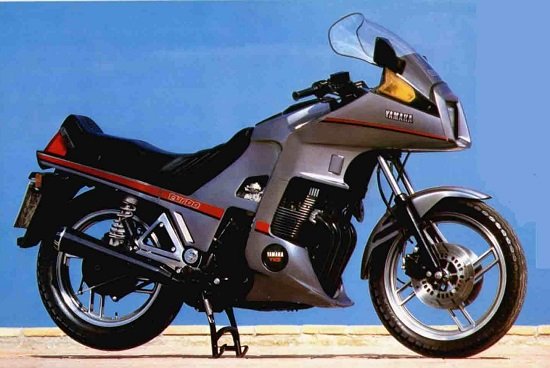
According to the factory manual:
"The exhaust system has an inner wall of stainless steel from the header pipes to the turbocharger. A patented exhaust manifold links the #1 and #4 exhaust pipes together and the #2 and #3 pipes together before they enter the turbocharger; this design provides even exhaust pulsing to drive the turbine and results in greater midrange torque. A wastegate in the manifold bleeds off excess exhaust pressure to prevent too much boost in the intake. The left-side muffler receives the exhaust gas from the turbo unit, and the right-side muffler handles excess from the wastegate."
Turbo Boost PSI
The 1982 models had a stock boost of 7 PSI which produced 88.7 horsepower at 9,000 RPM.
The 1983 models were given a little more boost at 12 PSI. Most dealers offered to add boost to the earlier model if the customer so desired.
Yamaha Induction Control System
The motor featured Yamaha's Induction Control System (YICS). More from the factory manual:
"YICS is a secondary port cast into the cylinder head, linking the main induction tracts. It brings a secondary charge into the main tract at an angle so that it mixes with the main flow of fuel and the mixture is swirled completely around the combustion chamber, thus resulting in more complete cylinder filing which leads to more power and less fuel consumption."
Translation: Power is added in the low to mid-range RPM range, with a subsequent increase in fuel efficiency.
_________________________________________________
_________________________________________________
Seca Turbo Dash
The dash instruments included a conventional tachometer and speedometer, as well as a boost gauge. There were also LED warning lights for low fuel, oil, battery and brake fluid, headlight and taillight failure, and side-stand retraction.
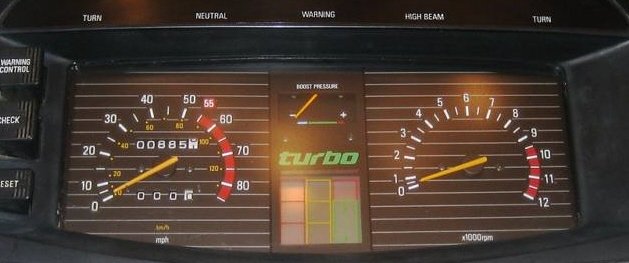
The fuel level was displayed by four rectangles, each signifying a quarter-tank of gas.
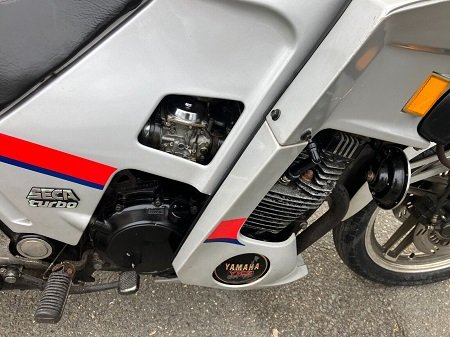
************************
Back Story
In the winter of 1982, I had decided to convert my 1972 Sportster into a full custom hardtail. This meant I needed to find another daily rider.
It didn't take me very long to find a second motorcycle to commute with. I saw a picture of the XJ650 Seca Turbo in a bike magazine, and shortly after, rode down to the local Yamaha dealership to inquire.
The Yamaha dealer (Hicksville, NY) didn't have one in stock, but after a deposit was put down, one arrived a week later. It was actually a discounted, left-over 1982 model.
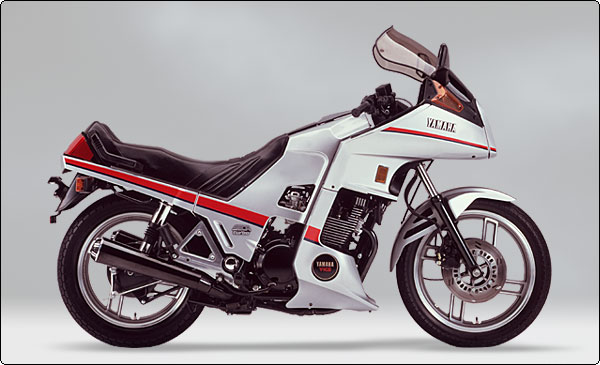
Several things appealed to me about this bike.
First, the frame-mounted fairing and leg shields, which blended nicely into the seat/tail section. I thought this would offer at least a bit of protection from the elements without being unnecessarily bulky.
Second, a shaft-drive motorcycle can endure bad weather better, as well as needing less maintenance than a chain-drive bike.
Riding Impression
Riding below 6000 rpm, the Seca-Turbo feels like any other in-line four-cylinder bike. But twist the throttle and hold on--when the turbo kicks in, it launches you down the road.
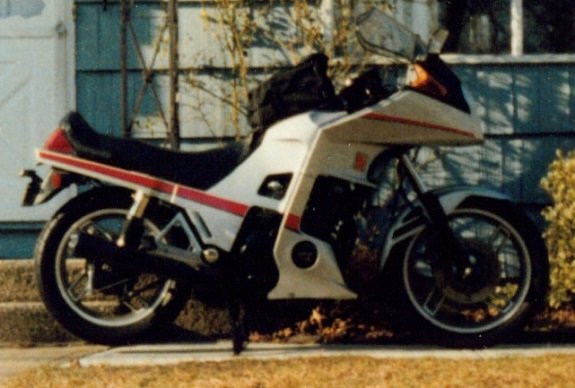
Once you were moving and down-shifted, the power was amazing. At high revs with the turbo already spinning, the front wheel would lift when shifting from 2nd to 3rd.
No Turbo Lag!
Yamaha's unique system provided fresh air directly from the air cleaner to the surge tank through a reed-valve-controlled passage. This allowed speed to build freely until the turbo unit resumes its pressurizing effect and closes the reed valve. There is also a surge tank with a poppet-type relief valve that backs up the wastegate in preventing excess boost in the intake side.
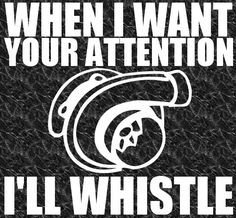
One of the most awesome sounds an internal combustion engine can make is the whine of a turbo spinning at 20,000 RPM.
Although capable of twelve-second quarter-mile times, it wasn't designed for off-the-line acceleration. The final shaft drive certainly robbed the rear tire of power.
Production Stats
Yamaha offered the XJ650 Turbo for two years only, building about 6,500 bikes in 1982 and another 1,500 in 1983.
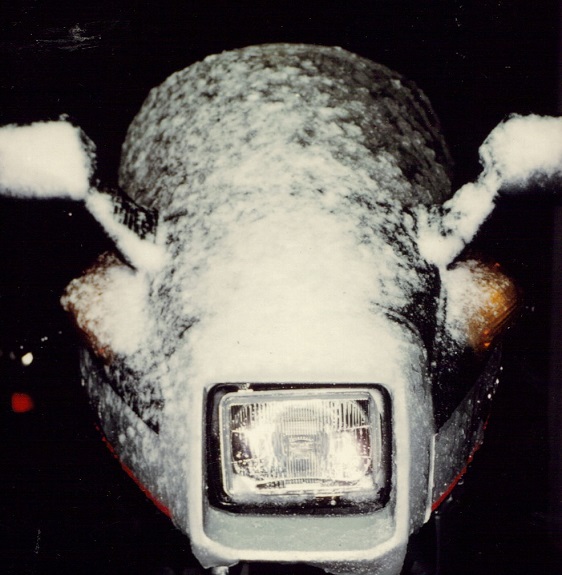
Turbo bikes never enjoyed mainstream popularity, and they really weren't around long enough. Engineers were soon able to coax more power out of normally aspirated engines, which ended the need for the more expensive and complex turbochargers. Yamaha dropped the XJ Turbo series for 1984 in favor of their new FJ series bike.
************************
Notes and Misc
During the time I owned the Yamaha, it shared the garage with my Ironhead Sportster hardtail. I thought nothing of alternatively riding right-side shift and left-side shift motorcycles.
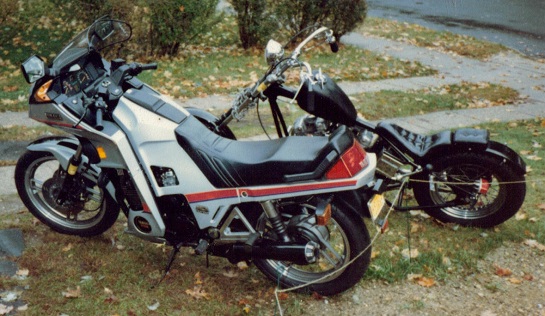
Like all other Japanese motorcycles, the five-speed transmission shifted flawlessly.
************************
'Never Say Never Again' Motorcycle
In the 1983 film 'Never Say Never Again', secret agent 007, played by Sean Connery, chases after a Renault 5 Turbo riding a modified XJ650 Seca Turbo.
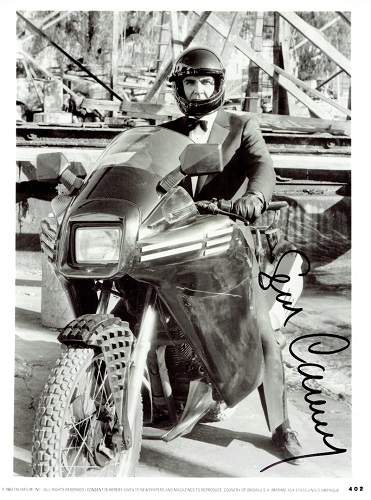
************************